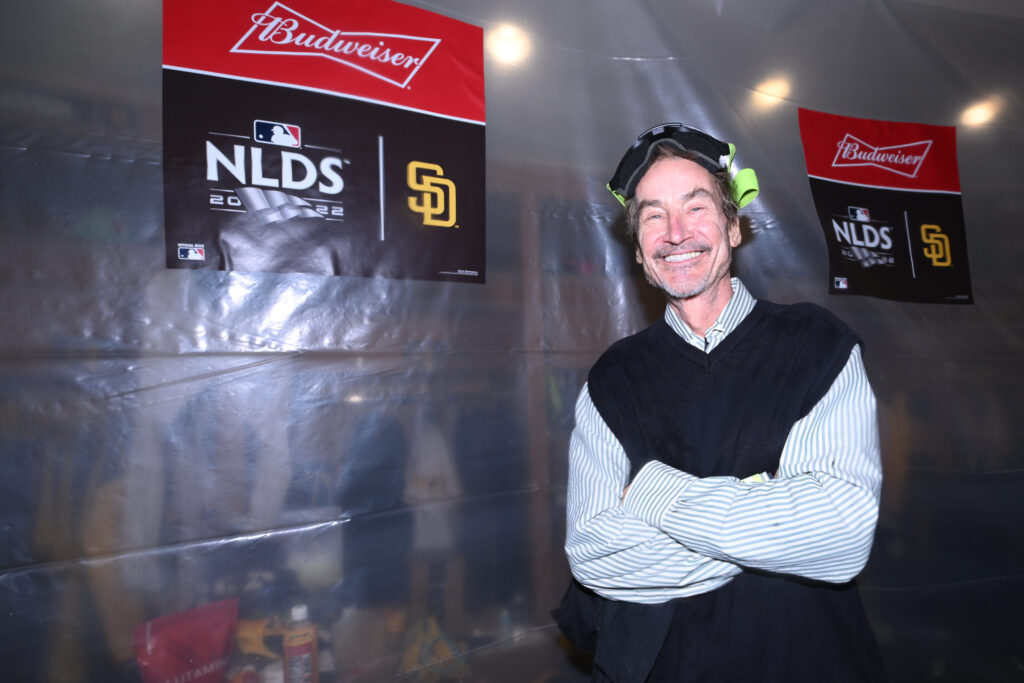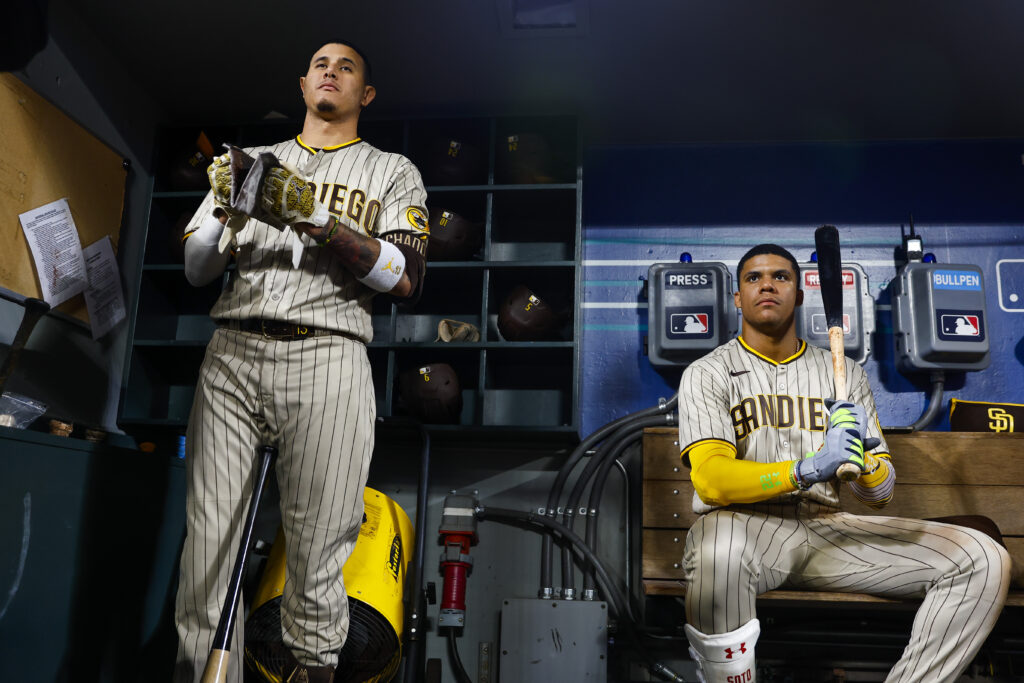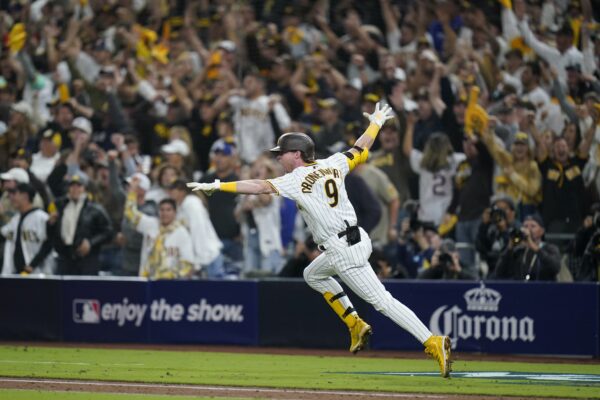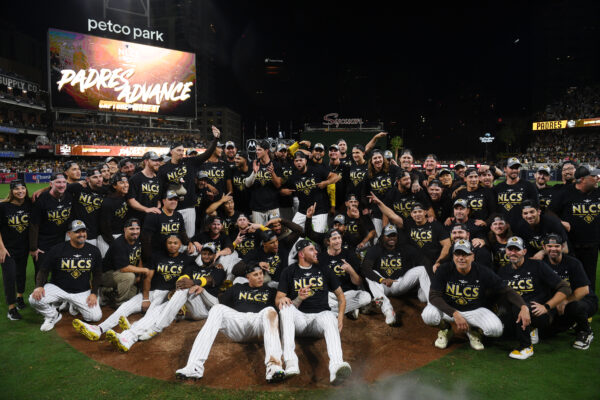Padres model: Golden State Warriors-esque or a house of cards?

Mandatory Credit: Orlando Ramirez-USA TODAY Sports

The Padres, more specifically, owner Peter Seidler, raised plenty of eyebrows this offseason with his business model in regard to his baseball team.
It left other “small market” owners with flushed faces, embarrassed that their cozy blanket of crying poor under which they hid had been ripped from them. It left them to face the reality. Some lashed out, questioning the “sustainability” of Mr. Seidler’s tactics. Even the commissioner himself, Rob Manfred, has questions.
After all, since March 2021, the Padres tossed a total of $1,178,000,000 (yes, that is almost $1.2 billion, with a “B”) at five players. This is not to mention their desire to sign Juan Soto and/or Josh Hader long-term. That will make anyone stop and watch.
Where is all this money coming from? Honestly, as a baseball fan, who cares? The Phillies owner John Middleton said it best a few weeks ago.
“My goal is that we create a team that, 100 years from now, when people ask the question, ‘What are the greatest teams in the history of baseball,’ the Phillies are in the conversation. How much money did the ’27 Yankees make? Or the ’29 A’s? Or the ’75-76 Big Red Machine?
Does anybody know? Does anybody care? Nobody knows or cares whether any of them made any money or not.”
It’s not hard to imagine Seidler agreeing with that sentiment.
In the end, if the Padres win a championship, or two, or three, no one will care. It worked.
Now the billion-dollar question is, will it work? That’s the fun part. The Padres are trying to do something special. They are trying to go from a laughingstock of a franchise, a doormat for decades as they exchanged hands from cheapskate owner to cheapskate owner, to a perennial power and a premier destination in the sport.
The dream scenario for this Padres group is to become the MLB version of the NBA’s Golden State Warriors. Mired in mediocrity or worse for decades, the Warriors are now a feared power in the NBA, fresh off of their fourth NBA championship in an eight-year span. They went from winning a total of one playoff game in 16 years from 1991 to 2007 to housing one of the best players the game has ever seen in Steph Curry, who has led the franchise to Kobe-Shaq-era-Lakers heights. From league-wide joke to champs- how did that happen?

First, they needed an owner who prioritized winning over marginal gains to his wallet. Joe Lacob became majority owner of the Warriors during the 2010-2011 NBA season. A few years later, he made one of the best hires in sports of the last decade or so, in head coach Steve Kerr. He helped the Warriors draft extremely well, with Curry, Draymond Green, and Klay Thompson all Golden State draft picks. He lured former MVP Kevin Durant to the Bay Area and made a super team, which led to back-to-back titles. Aside from Durant, the core group has stuck together to achieve greatness.
The quality of coaching and player development is top-notch. Just last year, they turned former No.1 overall pick bust Andrew Wiggins into a key piece of a championship run.
Lacob made heady move after heady move with coaching, executives, players, and finances. Now the Warriors are easily the most well-run organization in the NBA. This, after years, decades, as an afterthought. They had made the playoffs just six times in 36 years before Lacob sunk his teeth into the franchise. Now, along with four titles, they have missed the playoffs just twice in the last decade.
Having a quality owner who makes intelligent decisions regarding coaching and personnel is key to any sports franchise’s success. Then those smart hires turn players into championship-caliber stars.
Can the Padres, and Seidler, replicate this success?
They have the all-in owner check. They have the respected veteran coach in Bob Melvin, check. They have the superstars and plenty of them. They even have more financial flexibility, given that Major League Baseball has no salary cap, unlike the NBA. Granted, the luxury tax thresholds serve as a slight “soft” cap that some MLB owners take as gospel.
Do the Padres have Golden State Warriors-level quality of player development and scouting? Frankly, that is still in question.

The draft is where the Padres, frankly, have not seen the fruits of their labor as far is homegrown talent making a huge impact on the big league roster. However, A.J. Preller should be praised for his eye for young talent and ability to increase the value of prospects to dangle for big-time trades.
The Padres’ flurry of star-studded acquisitions like Soto, Hader, and Bogaerts in the last eight months could be likened to the Warriors acquiring Durant, essentially completing a “super team.”
Through at least the 2027 season, the Padres have Boagerts, Fernando Tatis Jr., Manny Machado, Yu Darvish, and Joe Musgrove under contract. They have the exciting trio of Bogaerts, Tatis, and Machado locked up through 2033 (read that again). That’s 11 seasons.
Are there cautionary tales to the Padres model? Sure, there are. Even if sustainability isn’t the question, it’s fair to wonder where the Padres will be in the late 2020s with Manny Machado and Xander Bogaerts in their late 30s. Tatis has proven to be unpredictable, even with predictably insane on-field results. Darvish, Bogaerts, and Machado will all be north of 40 when their deals expire.
It’s fair to say, “well, if they win a World Series or two, who cares what it will be like in 2030?”
This just in-, it’s really hard to win a World Series.
Plenty of “super teams” have crashed and burned without a title to show for it. The 2001 Mariners come to mind. After setting tying an MLB record with 116 regular season wins, they fell short in the ALCS. The Dodgers, who have won nine N.L. West titles in 10 years, including eight straight, along with four 100-win seasons, won a World Series in the shortened 2020 but underachieved every other time. But at least they won one title, even if they feel they should have won plenty more.
The 1990s Braves are also a tale of how hard it is to win a World Series when they had five future Hall of Famers on their squad. They did win in it all in 1995, but, like the recent run by the Dodgers, it feels like they underachieved.
The Angels currently employ arguably the two best baseball players on planet Earth in, Mike Trout and Shohei Ohtani, and yet Ha-Seong Kim has played in more playoff games than those two combined. They also paid bookoo bucks to Albert Pujols, who they inked to a 10-year, $254 million deal heading into his age 32 season. That contract turned into a colossal albatross that weighed the franchise down for years. It wasn’t just Pujols either. The Angels threw bags of money at Justin Upton, Andrelton Simmons, and now Anthony Rendon. All of these are looking like total duds that torpedo a team’s hopes for years and years.
Players decline faster and slower than others. They get hurt. Their lives change. So many variables are at play still. Plus, how long can the Padres brashly disregard the tax thresholds?
So, which is it for the Padres? It’s impossible to say. It’s irresponsible to try and predict. Many are even hoping for the Padres’ demise. It’s all up to the leadership and the personnel they put on the field. It can go either way. But they are setting themselves up for a historic run through baseball. You cannot fault the Padres for trying. You cannot say they did nothing. This franchise is finally prioritizing winning, trying to get any top baseball player they can, costs be damned. That’s all any true baseball fan wants.
It’s clear that, at least at the top, the Padres and Golden State Warriors can be fairly compared. It’s the trickle-down to players producing championships, obviously, that is the difference so far. Before 2022, this was all talk for the Padres, with little-to-no-walk. The Padres have the opportunity to make a statement in 2023. Now, with a run to the NLCS last season, it’s put-up or shut-up time.
Native of Escondido, CA. Lived in San Diego area for 20 years. Padres fan since childhood (mid-90s). I have been writing since 2014. I currently live near Seattle, WA and am married to a Seattle sports girl. I wore #19 on my high school baseball team for Tony Gwynn. I am a stats and sports history nerd. I attended BYU on the Idaho campus. I also love Star Wars.